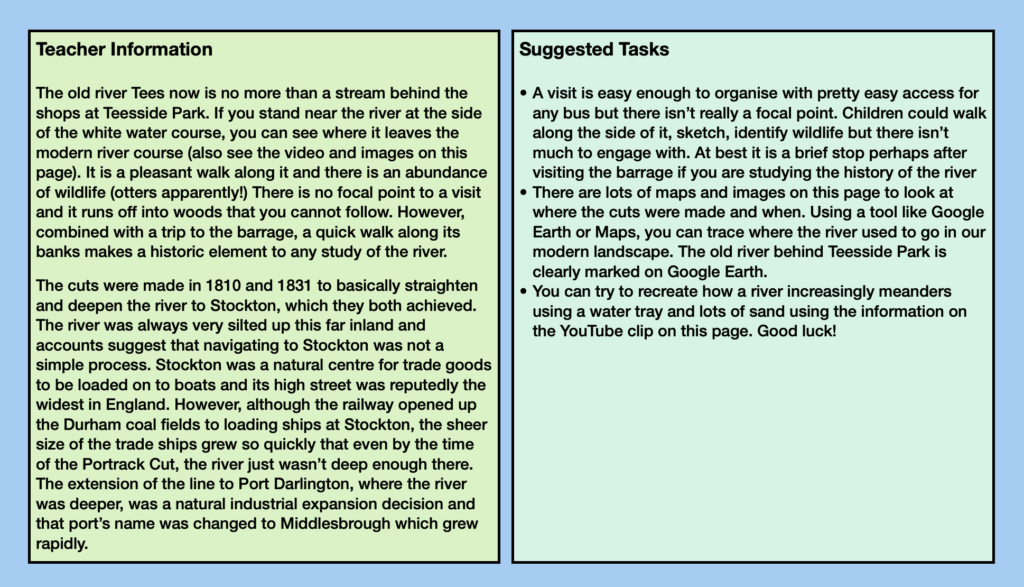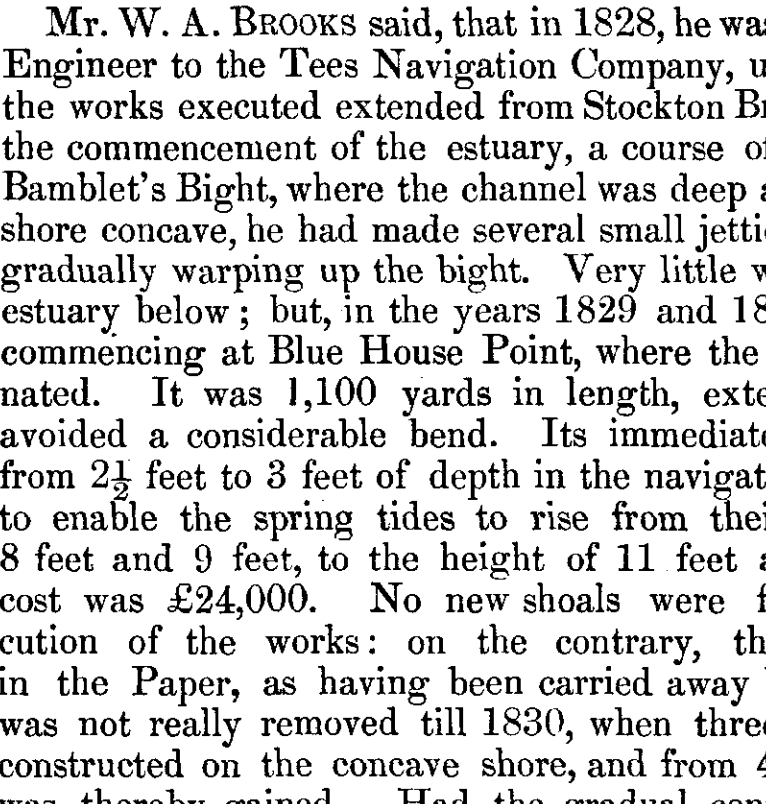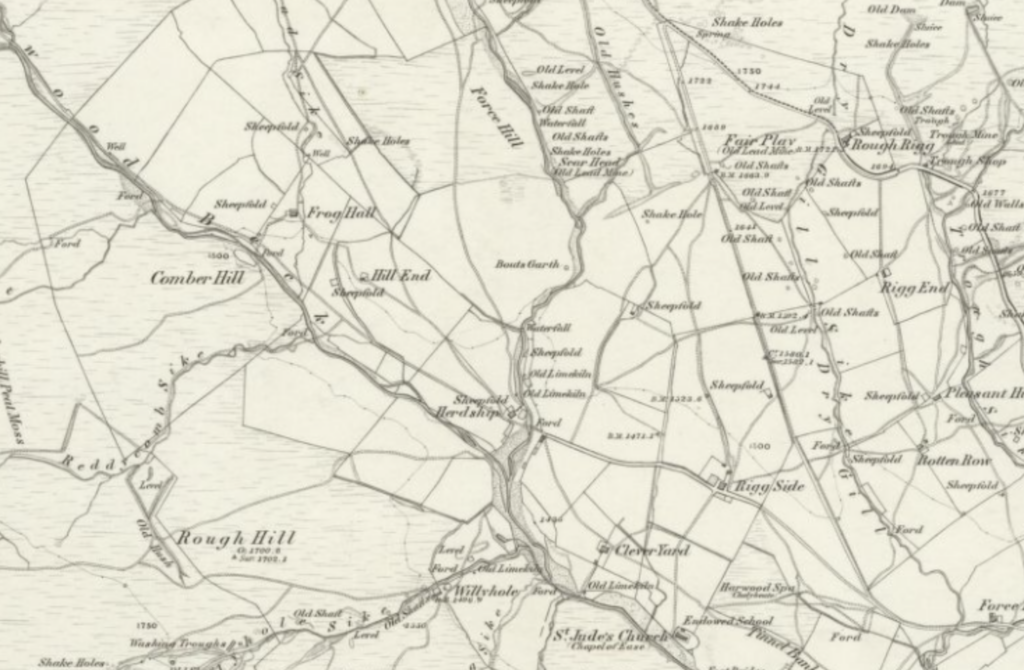INTRO
Old River Tees
The River Tees meanders. Over thousands of years it has found and cut its way through the softest rock and as a river flows around a corner it often creates more of a ‘bend’ over time. There is a video on this page to show you how this happens. The river Tees meanders a LOT. And this is fine until you want to sail large boats full of trade goods or coal along it. The journey to the sea will often take a long time and in a tidal river this means that there will be stops every six hours as the tide falls.
When trade boats really started to grow in the 18th century, the wealthy industrial leaders of Teesside realised that is they could make the river shorter, cut out some of the bends, then their boats would get to the sea and make them money in sales much faster and more often.
The result was a series of cuts in the early nineteenth century to miss out out a couple of meanders and straighten the river. This mad the distance to the sea shorter and also the river deeper at Stockton where many of the trade ships were heading.
In 1810, the Mandale Cut was opened to bypass the southern meander followed by the Portrack Cut that eliminated a northern one. This massively improved the depth of the water in the river with was a huge bonus because much of the river at that point was full of sandbanks which were hard to navigate around, especially when the river was running low.
The old river still exists in small parts. If you walk around the back of the shops at Teesside Park (behind Morrisons and Boots) you can see what looks like a big stream. That is where the river used to be before the cuts were made in it.








